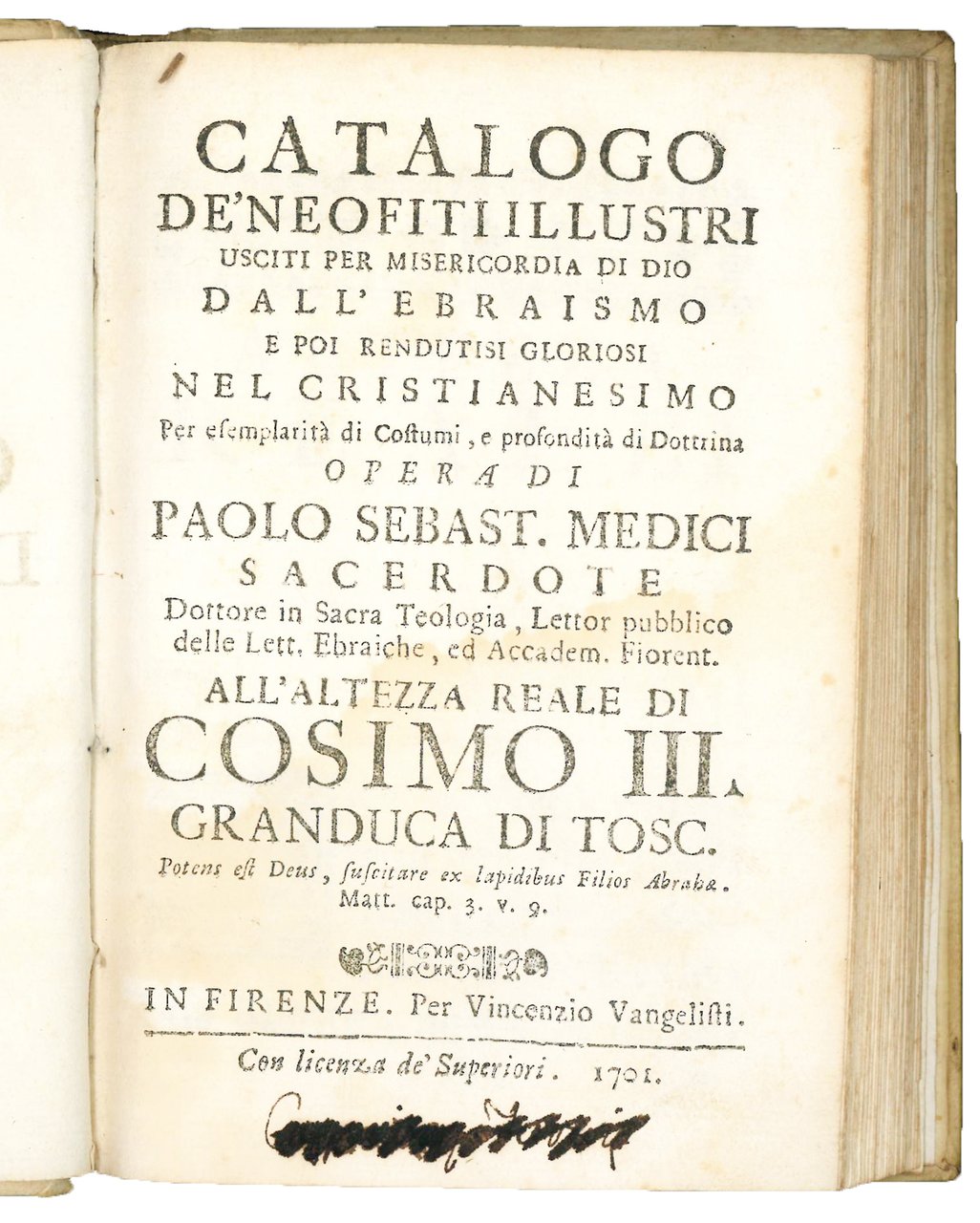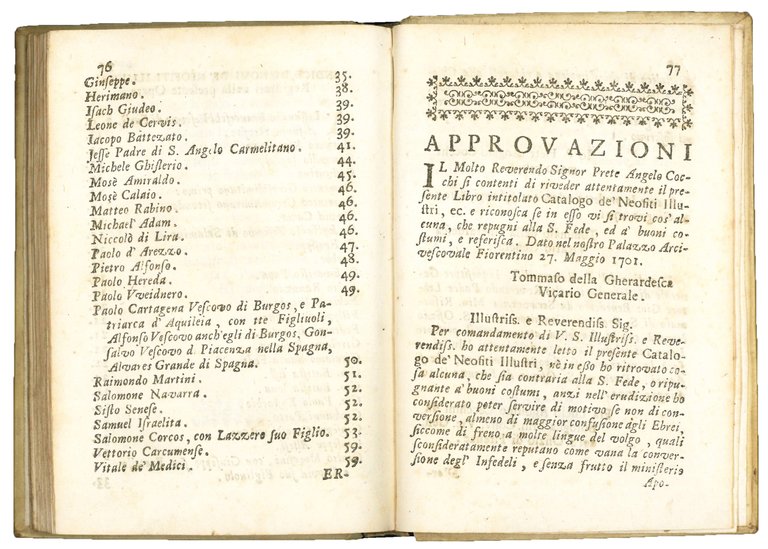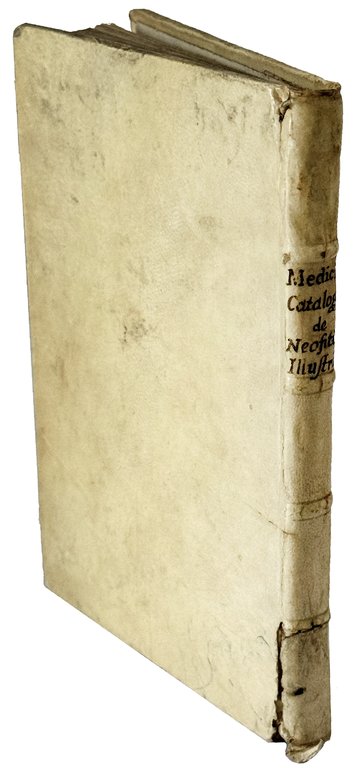




Rare and modern books
MEDICI, Paolo Sebastiano (1671-1738)
Catalogo de' neofiti illustri usciti per misericordia di Dio dall'Ebraismo e poi rendutisi gloriosi nel Cristianesimo per esemplarità di costumi, e profondità di dottrina opera di Paolo Sebast. Medici sacerdote dottore in Sacra Teologia, Lettor pubblico delle Lett. Ebraiche, ed Accadem. Fiorent. all'altezza reale di Cosimo III [...]
Vincenzio Vangelisti, 1701
500.00 €
Govi Libreria Antiquaria
(Modena, Italy)
The correct shipping costs are calculated once the shipping address is entered during order creation. One or more delivery methods are available at the Seller's own discretion: Standard, Express, Economy, In-store pick-up.
Bookshop shipping conditions:
For items priced over €300, it is possible to request an instalment plan from Maremagnum. Payment can be made with Carta del Docente, Carta della cultura giovani e del merito, Public Administration.
Delivery time is estimated according to the shipping time of the bookshop and the courier. In case of customs detention, delivery delays may occur. Any customs duties are charged to the recipient.
For more infoPayment methods
- PayPal
- Credit card
- Bank transfer
-
-
Find out how to use
your Carta del Docente -
Find out how to use
your Carta della cultura giovani e del merito
Details
Description
Rare first edition of this compendious work, drawn mainly from the Bibliotheca Magna Rabbinica, dedicated to celebrating the deeds of the most illustrious Jewish converts, a category to which the author himself belonged.
Paolo Sebastiano Medici, whose Jewish name was Mosé, was born in Livorno on July 30, 1671, to Alessandro “Leone” of Ancona. He was baptized in June 1688, on the eve of his seventeenth birthday, in the Collegiate Church of Livorno. He was an itinerant preacher in the Grand Duchy of Tuscany, and occasionally also in the Papal States, active in places where there were Jewish communities. From 1692, he taught Hebrew at the Florentine Studio and from 1718, he was a professor of Sacred Scripture. Author of numerous books, both in Hebrew and on biblical exegesis, he was noted for the particular vehemence and harshness of his sermons, delivered mostly in Livorno, Pisa, and Florence, where he took up residence. The Jewish communities, who were forced to attend sermons aimed at their spiritual salvation on Saturdays, protested against the fundamentalist violence of Medici's predication. A written protest against his sermons was submitted to the Holy Office in 1705 by the famous and highly learned Roman rabbi Tranquillo Vita Corcos, with the endorsement of Catholic scholars. In particular, Corcos eruditely rejected Medici's theses, which essentially sought to portray Jewish rites as superstitious and demonic. The fact that I riti e costumi degli Ebrei confutati dal dottore Paolo Medici sacerdote fiorentino (Florence, 1736), Medici's main work, was published only thirty years after Corcos' complaint, is considered by M. Caffiero as indicative of the Christian authorities' concerns about his work (cf. L'odio del convertito, in: “Battesimi forzati. Storie di ebrei, cristiani e convertiti nella Roma dei papi”, Rome, 2004, pp. 36-42; see also F. Parente, Il confronto ideologico tra l'Ebraismo e la Chiesa in Italia, in: “Italia Judaica. Atti del convegno internazionale Bari 18-22 maggio 1981”, Rome, 1983, p. 366).
Italian Union Catalogue, IT\ICCU\BVEE\027639; E.P. Goldschmidt, Catalogue XX, London, 1929, no. 212.

